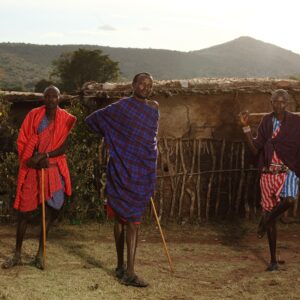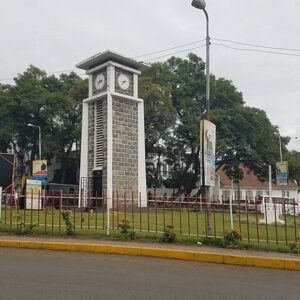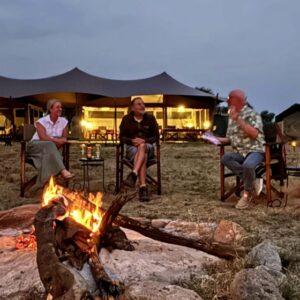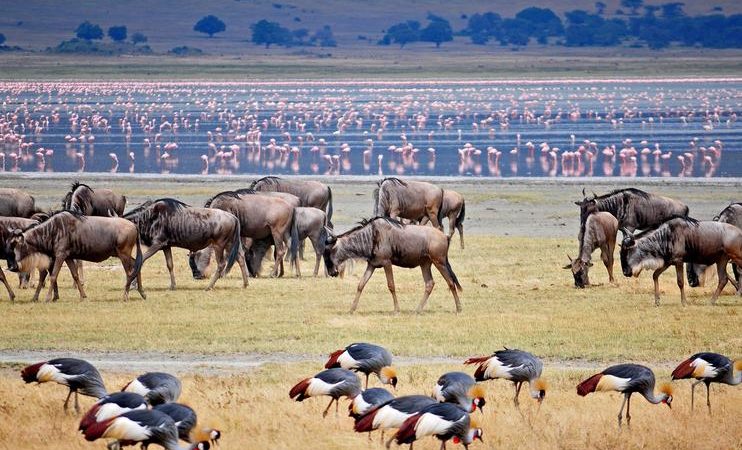How many Days to Spend on a Serengeti Safari?
Visiting the Serengeti National Park is a once-in-a-lifetime experience that requires careful planning and ample time. Allocating at least a week allows you to explore the park’s diverse regions, witness its incredible wildlife, and immerse yourself in its stunning landscapes. By considering the factors outlined in this guide and planning your trip thoughtfully, you can ensure a memorable and enriching safari adventure in one of the world’s most celebrated national parks. The time it takes to experience Serengeti Safari Tour depends on what you’re after. To truly soak in the beauty, witness the Great Migration, and explore different zones, you’d want at least 4 to 5 days. This duration lets you balance game drives, relaxation, and enjoy diverse landscapes.
Understanding the Scope of the Serengeti Safari
The Serengeti National Park is an expansive, awe-inspiring ecosystem that spans approximately 14,750 square kilometers in northern Tanzania. Renowned for its unparalleled wildlife diversity, it is home to the Great Migration, one of the most spectacular wildlife events on Earth. The park’s vastness means that planning a trip here requires a deep understanding of its layout, seasonal variations, and the diverse experiences it offers. From the endless plains to the riverine forests, the Serengeti presents an array of habitats that support a rich tapestry of life.
Ideal Duration for a Serengeti Safari
Determining the ideal duration for a Serengeti safari depends on several factors, including your interests, budget, and travel style. Generally, a stay of 4 to 7 days is recommended to fully appreciate the park’s magnificence. A shorter trip might leave you rushing through the highlights, while a longer stay allows for a more relaxed pace, providing ample opportunities to witness the diverse wildlife and landscapes.
- 4 Days: Ideal for those with limited time. You can focus on specific areas such as the Seronera Valley, known for its year-round game viewing, and catch glimpses of the Great Migration if timed right.
- 5-6 Days: Offers a more comprehensive experience. You can explore different regions like the Western Corridor, famed for its dramatic Grumeti River crossings, or the Northern Serengeti, where the Mara River crossings take place.
- 7 Days or More: Perfect for an immersive safari experience. You have the flexibility to cover various zones, indulge in multiple game drives, and enjoy some relaxation time at your lodge or camp.
Factors Influencing Your Serengeti Safari Experience
Several factors significantly influence your Serengeti safari experience, including the time of year, the duration of your trip, your budget, and the types of activities you choose. Understanding these factors will help you plan a memorable and rewarding safari adventure.
Seasonal Variations: The time of year you visit significantly impacts your experience. The Great Migration, predator sightings, and weather conditions vary throughout the year.
Wildlife Behavior: Animals follow seasonal patterns and water sources. Understanding these behaviors can help in planning your safari to maximize wildlife sightings.
Safari Type: Whether you choose a guided tour, self-drive, or a luxury safari impacts the logistics and experience. Guided tours often provide deeper insights and better wildlife spotting.
Accommodation Choices: The type and location of your accommodation can affect the proximity to wildlife and your overall comfort during the safari.
Serengeti Safari Accommodation Choices
Serengeti National Park offers a variety of accommodation options, primarily categorized as lodges and camps. Lodges are typically permanent structures like hotels, while camps can be permanent, seasonal, or mobile tented accommodations. These range from budget-friendly to luxurious, with options to suit different preferences and budgets. Your choice of accommodation can greatly enhance your safari experience:
Luxury Lodges and Camps: These offer high-end amenities, personalized services, and often prime locations for wildlife viewing. Examples include the Four Seasons Safari Lodge and Singita Grumeti.
Mid-Range Lodges and Tented Camps: These provide a good balance of comfort and affordability. Examples are Serena Serengeti Lodge and Kubu Kubu Tented Lodge.
Budget Campsites: For the adventurous and budget-conscious, campsites offer a closer-to-nature experience. Options include Seronera Campsite and Lobo Public Campsite.
Serengeti Safari Travel Pace
A well-rounded Serengeti safari experience typically requires a minimum of 4 to 5 days. This allows for a balance of game drives, relaxation, exploration of diverse landscapes, and viewing a variety of animals. While a 3-day trip is possible, it may feel rushed, and 4-5 days provides a more comprehensive experience. Some travelers even choose to stay for two weeks to fully immerse themselves in the Serengeti. The pace of your safari is another crucial element. A well-balanced itinerary allows you to maximize wildlife sightings without feeling rushed. Here are some tips for setting the right travel pace:
Morning and Evening Game Drives: These are the best times to see wildlife as animals are most active during these cooler periods.
Rest Periods: Incorporate midday rest periods at your lodge or camp to avoid the midday heat and relax.
Diverse Activities: Mix game drives with other activities such as hot air balloon safaris, guided walks, or cultural visits to nearby Maasai villages.
The Impact of Serengeti Park Seasons
The Serengeti’s seasons significantly impact wildlife movement, visitor experience, and even park accessibility. The dry season (June to October) concentrates animals around water sources, making for excellent wildlife viewing, while the wet season (March to May and November to December) brings lush landscapes but can make roads muddy and animal spotting more challenging. Seasonal changes play a pivotal role in shaping your Serengeti safari experience:
Dry Season (June to October): This is the best time for game viewing, especially for the Great Migration river crossings. The scarcity of water draws animals to rivers and waterholes, making sightings easier.
Wet Season (November to May): The landscape is lush and green, and it’s calving season for many herbivores. Bird watching is also excellent during this time, although some areas may be less accessible due to rain.
Exploring Different Serengeti National Park Zones
Serengeti National Park is vast and diverse, encompassing several distinct zones, each offering unique landscapes and wildlife viewing opportunities. The main zones include Central Serengeti (Seronera), Western Corridor, Northern Serengeti, and Southern Serengeti. Understanding these areas is crucial for planning a memorable safari. The Serengeti is divided into several distinct zones, each offering unique landscapes and wildlife experiences:
Central Serengeti (Seronera Valley): Known for its abundant resident wildlife and year-round game viewing.
Western Corridor: Famous for the Grumeti River and its dramatic wildebeest crossings.
Northern Serengeti: Offers spectacular Mara River crossings during the migration season.
Southern Serengeti and Ndutu Region: Prime location for calving season and predator action from December to March.
Balancing Serengeti Game Drives and Relaxation
While game drives are the highlight of any Serengeti safari, balancing them with relaxation is key to an enjoyable trip:
Morning Game Drives: Start early to catch predators in action and witness the morning routines of various animals.
Afternoon Rest: Use the hot midday hours to relax at your lodge, enjoy the facilities, or simply unwind with a good book.
Evening Game Drives: As temperatures drop, animals become more active again, providing excellent viewing opportunities.
Lodge Activities: Participate in activities offered by your lodge, such as nature walks, spa treatments, or cultural excursions.
Maximizing Your Serengeti National Park Safari Experience
Maximize your Serengeti experience by planning ahead, hiring knowledgeable guides, staying flexible, packing wisely, and respecting wildlife. Thorough preparation and thoughtful choices ensure an unforgettable safari adventure, allowing you to fully immerse yourself in the park’s stunning landscapes and diverse wildlife. To make the most of your time in the Serengeti, consider these tips:
- Plan Ahead: Research and plan your itinerary well in advance. Consider the seasonal variations and book your accommodations and safari activities early, especially during peak migration periods.
- Hire Experienced Guides: Knowledgeable guides can significantly enhance your safari experience by offering insights into animal behavior, ecology, and local culture.
- Stay Flexible: While it’s good to have a plan, staying flexible allows you to take advantage of unexpected wildlife sightings and opportunities.
- Pack Wisely: Bring appropriate clothing for varying weather conditions, as well as essential items like binoculars, cameras, and field guides.
- Respect Wildlife: Always maintain a respectful distance from animals, follow your guide’s instructions, and adhere to park regulations to ensure a safe and ethical safari experience.








